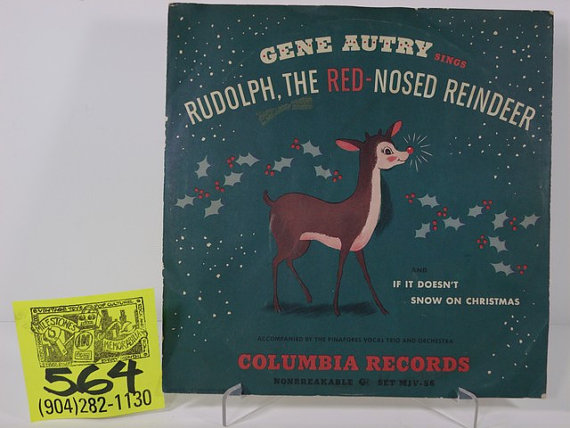You’ve probably heard the saying that something is as impossible as “herding cats,” used in reference to a seemingly futile or difficult task. Granted, if you have actually attempted to literally herd a bunch of cats for some reason or the other, you would know exactly how impossible this task actually is. All of that said, as far as we know, there’s no one out there who’s actually a professional cat herder. If there were, this day would actually be for those folks. This is a day for everyone who has to face the frustration of trying to manage the unmanageable, anyone whose day to day life involves insurmountable tasks.
While the idiom that something impossible is “like herding cats” is a popular saying now, the phrase has relatively recent origins – one story has it that IT expert Dave Platt popularized the phrase when he said that “managing senior programmers is like herding cats”. What we can say is that the phrase is pretty suitable for what it describes. And while cats are independent, solitary, and easily distracted, many humans also share this characteristic. So you may well have to complete tasks that are in fact as difficult as herding cats, even if you’ve never seen or heard of a cat until now. Anyway, we know that Cat Herders’ Day was invented sometime in the last decade, and is basically one of those cheeky holidays that you can celebrate however you want.
Get ten cats and a shepherd’s crook. Herd the cats using the shepherd’s crook, and you will have just made a futile attempt at herding felines. Congratulations, for you’re now a catherd/catherdess (like a shepherd, a cowherd, or a goatherd, only less often glorified in the Geetha Govinda or in baroque opera – we’ve yet to find pastoral scenes with catherds). Now that you’ve attempted and failed the impossible, head out and thank those who accomplish them every day. From project managers to daycare workers, head out and let those who handle impossible tasks with aplomb every day know how much you appreciate and, frankly, stand in awe of them. Someone has to be there to get these tasks done, and without those who seem to be capable of herding felines of the metaphoric variety, the world may not work as well as it does. On final note, on Cat Herders’ Day, do try not to be a cat.
thanks, helen
VINTAGE FINDS (part 2) ... mysocalledcraftylife
Word of the Day
|
|||
| Definition: | (noun) One who is habitually careless in personal appearance or work. | ||
| Synonyms: | slob, pig | ||
| Usage: | I could better eat with one who did not respect the truth or the laws than with a sloven and unpresentable person. | ||
Idiom of the Day
have (one's) feet on the ground
— To be and remain in a calm, stable, sensible, and pragmatic state or condition; to not be subject to extreme emotional reactions or affected by exceptional changes in one's situation.(ray and each of his siblings were given this EXACT reindeer from their parents as their first decoration. we stiill have rays' which we put on the tree as our first decoration every year!)
History
Gone with the Wind Premieres in Atlanta, Georgia (1939)
American writer Margaret Mitchell only published one novel during her lifetime—Gone with the Wind—and it became one of the most popular novels in the history of American publishing. In 1939, an extraordinarily successful film version of the book was released, transferring the romantic, panoramic portrait of the Civil War and Reconstruction periods in Georgia to the big screen. The movie won 10 Academy Awards.
Jean Paul Getty (1892)
The son of an oil millionaire, Getty was an American industrialist who increased his fortune and became the richest man in the world by acquiring oil companies and obtaining rights to a tract of land in Saudi Arabia that yielded great quantities of oil. Married and divorced five times, he was known for such bizarre behavior as installing a payphone in his mansion for guests to use and refusing to pay a ransom for his grandson even after being sent the boy's ear.
Consualia
The infamous rape of the Sabine women occurred at the first Consualia in ancient Rome. Consus is said to have advised Romulus to abduct the Sabine women as wives for his supporters. The sanctuary dedicated to Consus in 272 BCE was located on the Aventine Hill in Rome, and sacrifices were held there during his festival. There were also horse and chariot races in the Circus Maximus, the large arena that lay between the Palatine and Aventine hills. Two festivals were actually held in honor of Consus—one on August 21 and the other on December 15.
'Gentle Bot' Brings a Human Touch to Robotics
Robots of the future may have a more human touch, thanks to researchers at Cornell University.READ MORE:
'Gentle Bot' brings a human touch to robotics
1654 - A meteorological office established in Tuscany began recording daily temperature readings.

1815 - Jane Austen's "Emma" was published.
1854 - In Philadelphia, the first street cleaning machine was put into use.
1944 - Dr. R. Townley Paton and a small group of doctors laid the groundwork for the Eye-Bank for Sight Restoration.
1964 - Canada's House of Commons approved a newly designed flag thereby dropping the Canadian "Red Ensign" flag.
2000 - The Chernobyl atomic power plant in Kiev, Ukraine, was shut down.

DAILY SQU-EEK

If You Were Born Today,
December 15

READER'S INFO
PASS THE APPLE
thanks, susan b.


Tiger beetles are a large group of beetles known for their aggressive predatory habits and running speed. The fastest species of tiger beetle can run at a speed of 9 km/h (5.6 mph), or about 125 body lengths per second. As of 2005, about 2,600 species and subspecies are known, with the richest diversity in the Indomalayan realm, followed by the Neotropics.
Outdoor Lights After a Snowstorm in Chicago
 A set of outdoor lights becomes encased in snow, creating an unexpectedly beautiful glowing effect
A set of outdoor lights becomes encased in snow, creating an unexpectedly beautiful glowing effect
knit - christmas

knit
thanks, emily

knit

knit

knit - christmas
thanks, dawn

crochet - christmas
Gingerbread Man AmigurumisFanClub pattern by Judit Gu...
You can customize these so that the content and appearance is different in each case. Give us a surprise!!!
| |||||||
Preview by Yahoo
| |||||||
crochet
crochet

crochet - vintage

crochet - christmas
thanks, lisa

RECIPE
thanks, carol
Homemade healthy mayonnaise


CROCKPOT RECIPE

SWEETS


ADULT COLORING


CRAFTS - christmas


CHILDREN'S CORNER ... crafts

PUZZLE

QUOTE



CLEVER - christmas


EYE OPENER
10 Earliest Examples Of Writing Systems
As civilization evolved, the written word became absolutely necessary
for proper documentation—whether for governmental operations or
retelling myths. Rediscovering ancient or extinct languages is an
arduous process, often dictated by luck, but it is an invaluable tool in
the study of our growth as a species.
10 Gothic Bible

Language: Gothic
The Gothic Bible (aka the Wulfila Bible) was produced in AD 350.
Although only fragments survived, many of those pieces were edited
during the fifth century by a Catholic priest named Salvian, who claimed
that they were full of blasphemous phrases. The main reason for this was that Wulfila, like many Goths, was an
Arian—someone who believed that Christ was not God but a created being.
This was anathema to Catholics and their fervent belief in the Holy
Trinity.
Translated in Gothic as “Little Wolf,” Wulfila was a bishop and
missionary who was raised as a Goth. At age 39, Wulfila decided that it
would be easier to convert the Gothic people to Christianity if they had
a Bible in their own language.
As there was no alphabet and the Gothic language consisted of few
words, he had to create most of it himself. Adapting the alphabet used
by the Greeks, Wulfila also invented most of the words used to convey
abstract ideas within the Bible. The entire book was translated—with the notable exceptions of 1 Kings
and 2 Kings. The historian Philostorgius explained these omissions: The
Goths were “fond of war and were in more need of restraints to check
their military passions than of spurs to urge them on to deeds of war.”
9 Hieroglyphs In The Tomb Of Seth-Peribsen

Language: Egyptian
Although examples of single Egyptian hieroglyphs may be found elsewhere, the earliest known examples of full sentences of Egyptian hieroglyphs are located in the tomb of Seth-Peribsen, a pharaoh of the late second dynasty around 2740 BC.
Seth-Peribsen, the first pharaoh to use a Seth name rather than a
Horus name, was buried at Umm el-Qa’ab, an ancient necropolis where many
early dynastic kings were buried. However, some doubts about his reign persist because his name was
omitted from king lists written during later dynasties. To refute that
claim, some scholars point out that many priests during the fourth
dynasty were dedicated to his funerary cult, leading some to also
believe that Seth-Peribsen was a celebrated ruler of both Upper and
Lower Egypt.
Confirming that point, the clay seals in Seth-Peribsen’s tomb read as
follows: “Sealing of everything of Ombos (Naqada): He of Ombos [Seth]
has joined the Two Lands for his son, the Dual King Peribsen.”
8 Praeneste Fibula

Language: Latin
The Praeneste fibula (aka the brooch of Palestrina) is a golden brooch
with a troubled history. In 1887, a German archaeologist named Wolfgang
Helbig presented it to the public for the first time at the German
Archaeological Institute. He claimed to have received it from a friend who found it in
Palestrina, a still-occupied ancient city about 30 kilometers (20 mi)
east of Rome. Eventually, that unidentified friend was revealed to be
Francesco Martinetti, an accomplished forger. Helbig was also dogged by suspicions of shady dealings, although much of them came well after his death.
Questions arose about the Praeneste fibula because there was an engraving
on the 10-centimeter (4 in) brooch: “Manios had me made for Numerius.”
Dating back to the seventh century BC, this is the earliest known
example of Latin writing. However, as early as 1905, people suspected that the engraving was
faked. In 2011, scientists used new testing methods and declared that
the Praeneste fibula was genuine “beyond any reasonable doubt.”
Their evidence focused on microcrystallizations of gold in the
inscription that could only have formed after centuries of existence. A
19th-century forger could not have faked this.
7 Knossos Tablets

Language: Mycenaean Greek (Linear B)
Mycenaean Greek, the oldest attested form of the Greek language, is
also known as Linear B, especially when referring to the writing system.
Scholars generally agree that Linear B was derived from a slightly
older syllabic script known as Linear A. Linear A has been dubbed the “Minoan language” because it is found in
the ruins of the Minoan civilization. For now, it’s still untranslated.
However, Linear B has been translated, with nearly 200 signs found on
clay tablets. These symbols range from numerals to depictions of various
objects.
The majority of clay tablets with Linear B inscriptions have been discovered in Knossos
on the island of Crete and in Mycenae and Pylos on mainland Greece. In
1900, British archaeologist Arthur Evans uncovered a treasure trove of
tablets dating back to 1400 BC. However, the script remained
undeciphered for years.
That task was eventually undertaken by amateur Michael Ventris, a
mostly self-taught scholar who had seen the tablets when he was a
schoolboy. The tablets were finally translated more than 50 years after
their discovery. They were used mainly for recording the disbursement of
goods.
6 Behistun Inscription

Language: Old Persian
For scholars, the Behistun Inscription is as invaluable in deciphering cuneiform script
as the Rosetta Stone is in translating Egyptian hieroglyphs. Widely
believed to be the earliest example of Old Persian, the Behistun
Inscription is a rock relief carved into a cliff at Mount Bisotoun (“the
place of God”) in Iran. Written by Darius the Great after his coronation in 522 BC, the
Behistun Inscription is less of a historical document and more of a
triumphant autobiography which sometimes borders on outright propaganda.
Old Persian, a forerunner of the modern language of Farsi, only
lasted a few hundred years. Then the natural evolution of language
produced something different enough to be considered new.
The meaning behind the words—as well as the true identity of the
author—faded into obscurity until Sir Henry Rawlinson, the father of
Assyriology, deciphered the text.
5 Instructions Of Shuruppak

Language: Sumerian
The Instructions of Shuruppak may be the greatest piece of Sumerian wisdom literature,
which are writings intended to teach about the divine or how to be
virtuous. They were written by an eponymous king and dedicated to his
son. Similar to Proverbs in the Jewish and Christian tradition, the Instructions of Shuruppak contain lists of advice ranging from the moral to the practical.
Although the exact date of authorship is unknown, extant copies found
in the ruins in Abu Salabikh have been dated to 2500 BC. The
Instructions of Shuruppak were a popular teaching tool as shown by the
relatively large number of copies found at other sites, with some even
dating to 1500 BC.
The later version was in Akkadian, which had supplanted the Sumerian
language as the premier spoken language by that time. This occurred
mainly due to the conquests of Sargon of Akkad.
4 Ebla Tablets

Language: Eblaite
Found in the ancient city of Ebla, Syria, the Ebla tablets numbered more than 11,000 and were discovered in situ, an archaeological term that means “in their original positions.”
Pablo Matthiae, an
Italian archaeologist, discovered them in the
mid-1970s. They proved invaluable for revealing the history of an
extremely prosperous kingdom throughout the third millennium BC.
Eblaite, the second earliest attested Semitic language after Akkadian,
is probably the most ancient language
to survive in substantial form. Like many of the Mesopotamian
languages, the cuneiform used by the citizens of Ebla drew heavily on
the Sumerian language. Due to this and the sheer number of tablets found in Ebla, scholars
have used the language to assist in the comparative study of other
Semitic languages, including Hebrew.
In addition, the Ebla tablets attracted a lot of controversy because many claims were made about their confirmation of cities
mentioned in the Jewish tradition. For years, the tablets were
purported to contain the earliest mentions of many cities, including
Jerusalem. But that has been proven to be incorrect.
3 Gezer Calendar

Language: Hebrew
The Gezer calendar is not a calendar in the sense in which we use
them now, but it did contain the earliest example of the Hebrew
language. Written on a piece of limestone
that has been dated to the late 10th century BC, the Gezer calendar
derived its name from the annual agricultural cycle written on it.
In 1908, the calendar was discovered by Irish archaeologist R.A.S.
Macalister in the ancient Canaanite city of Gezer. The calendar has
seven lines of text. Each line references one or two months and the
appropriate action to be taken. For example, the month of Nisan is
associated with the harvest of flax. However, the true purpose of the Gezer calendar is unknown. Some
scholars have suggested that it might have been a schoolboy exercise or a
popular folk song.
2 Markings On Oracle Bones

Language: Chinese
The oracle bones, which bore the markings of an ancient form of
written Chinese, were constantly being uncovered. However, nearly all of
them were found by peasants. Some people who were ignorant of the oracle bones’ value ground them into poultices
to heal various ailments. Dating back to 1200 BC, these bone fragments
from turtles or buffalo were inscribed with different texts and then
used by the kings of the Shang dynasty to predict the future.
Wang Yirong, a Chinese antiquarian, was the first to realize their
true worth after he found them on sale as “dragon bones” in Peking in
1903. Traditional Chinese medicine often recommended grinding up bones
from the Pleistocene epoch.
Although initially believed to be fakes, the bones were confirmed to
be authentic nearly three decades later. Furthermore, the oracle bones
stopped a lot of criticism about early Chinese history, including that
from scholars who had doubted the existence of the Shang dynasty.
1 Mesha Stele

Language: Moabite
The Mesha Stele, which contained writing with the Phoenician
alphabet, was created by King Mesha of Moab after he successfully
restored the lands of his people. Created around 860 BC, the stele describes the exploits of Mesha,
including building projects, and the actions of Kemosh, the god of
Moab, who returned to his people and helped them to throw off the yoke
of Israel. In fact, the stele is the earliest nonbiblical reference that
contains the word “Israel.”
The first European known to have seen the stele was French missionary F.A. Klein, who was led there by a local bedouin.
Klein shared the information with another Frenchman, archaeologist
Charles Simon Clermont-Ganneau. He recognized the importance of the find
because using archaeological discoveries to prove facts within the
Bible was becoming extremely popular. Clermont-Ganneau sent an Arab intermediary to take a “squeeze” (a
papier-mache impression) of the stele, something which proved to be
quite fortuitous. When Clermont-Ganneau sent a second person to make a
stamp of it, the local bedouins, perhaps enraged by local politics or an
ownership dispute, broke the stele into pieces.








No comments:
Post a Comment